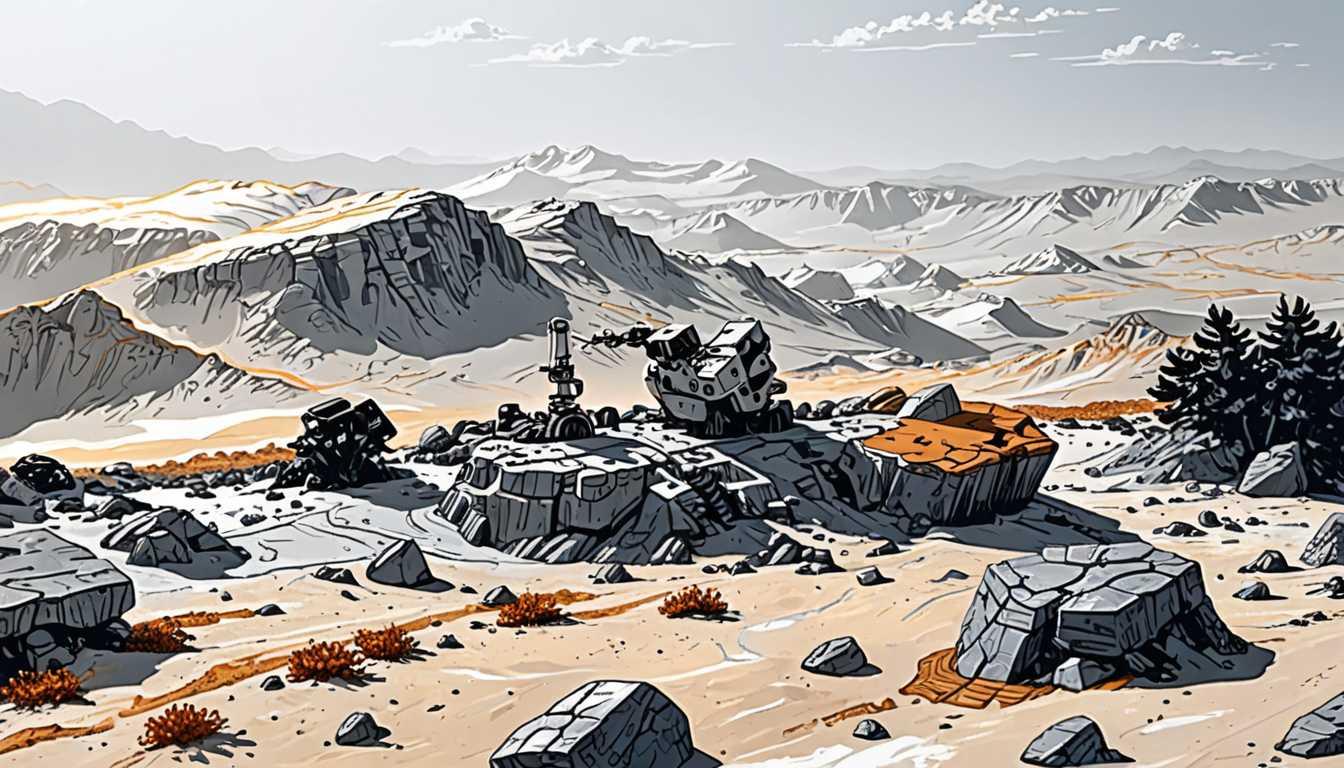Journey to Earth's Fiery Heart
June 2023
Smithsonian Magazine
Introduction
Dive into the depths with Smithsonian Magazine as scientists embark on an epic quest beneath the North Atlantic Ocean, drilling into Earth's mantle to snatch rocks from its secretive grip. This isn't just a rock collection; it's the deepest mantle exploration ever, unlocking secrets of our planet's crust, volcanism, and maybe even the origins of life itself. Join the JOIDES Resolution's crew on a journey to the Atlantis Massif, where peridotite rocks whisper tales of Earth's fiery heart. Ready for an adventure to the center of the Earth?
READ FULL ARTICLEWhy It Matters
Discover how this topic shapes your world and future
Digging Deep into Earth's Secrets
Imagine unlocking the mysteries that lie beneath our feet, deeper than any human has ever ventured. The recent expedition to extract rocks from Earth's mantle is not just a scientific milestone; it's a journey into the unknown realms of our planet. This endeavor matters because it sheds light on the Earth’s composition, the processes shaping our world, and possibly even the origins of life itself. By studying the mantle, scientists can gain insights into volcanic activity, plate tectonics, and the conditions that may have sparked the first flickers of life on Earth. For you, this adventure into the deep could spark curiosity about the world beneath your feet, inspire questions about how our planet came to be, and even influence future career paths in science or environmental stewardship. It's about connecting the dots between the classroom and the cosmos, showing that every rock, every seismic wave, tells a part of our Earth's story.
Speak like a Scholar
Mantle
The thick layer of solid and partially molten rock between Earth’s crust and core, making up about 84% of Earth's volume.
Silicates
Minerals composed of silicon and oxygen, forming the majority of Earth's crust and mantle.
Plate Tectonics
The theory explaining the movement of Earth's plates on the fluid mantle below, responsible for earthquakes, volcanic activity, and the creation of mountains.
Peridotite
A dense, coarse-grained igneous rock composed mainly of olivine and pyroxene, found in the Earth's mantle.
Biogeochemistry
The study of the chemical, physical, geological, and biological processes and reactions that govern the composition of the natural environment.
Magmatism
The process of magma generation, movement, and solidification, which plays a crucial role in shaping Earth's surface and interior.
Independent Research Ideas
The Role of Water in Earth's Interior
Investigate how seawater interacts with mantle rocks, influencing chemical reactions and potentially contributing to the origins of life. This topic merges geology with chemistry and biology, offering a multidisciplinary approach to understanding Earth's processes.
Comparative Planetology
Explore how Earth's mantle compares with the interior structures of other celestial bodies in our solar system. This could involve studying data from space missions to Mars, Venus, and the Moon, providing insights into planetary formation and evolution.
Renewable Energy from the Earth's Heat
Examine the potential of geothermal energy sourced from the mantle as a sustainable energy solution. This project could involve studying the technology behind geothermal energy extraction and its environmental impacts.
Earthquakes and Mantle Composition
Investigate the relationship between the composition of the mantle and the occurrence of earthquakes. This study could help in understanding how different mantle materials affect seismic wave propagation.
The Future of Deep-Sea Exploration
Delve into the technology and challenges of exploring the deep sea and Earth’s mantle. This project could explore advancements in drilling technology, the impact of deep-sea exploration on marine ecosystems, and the future possibilities of mantle research.
Related Articles

Lasers, Ice, and Earth’s Ancient Secrets
August 2023
MIT Technology Review

Clouds' Icy Secrets Unveiled
August 2023
Stanford University

Io’s Volcanic Secrets: New Telescope Images!
June 2024
UC Berkeley

Unraveling Mars: Where Did the Atmosphere Go?
October 2024
MIT News

Beneath the Ice: Antarctica's Hidden Discoveries
December 2024
JSTOR Daily